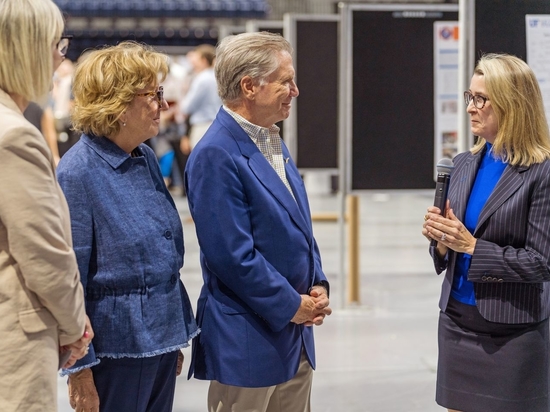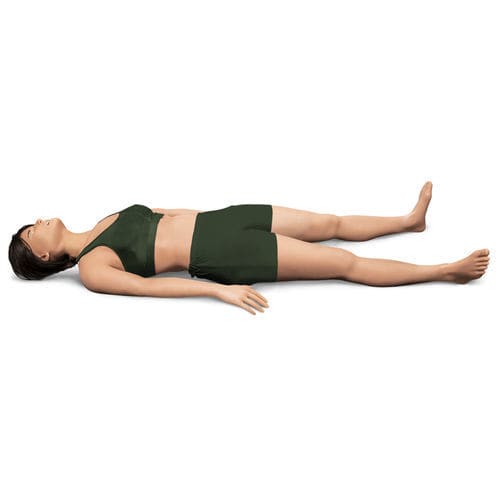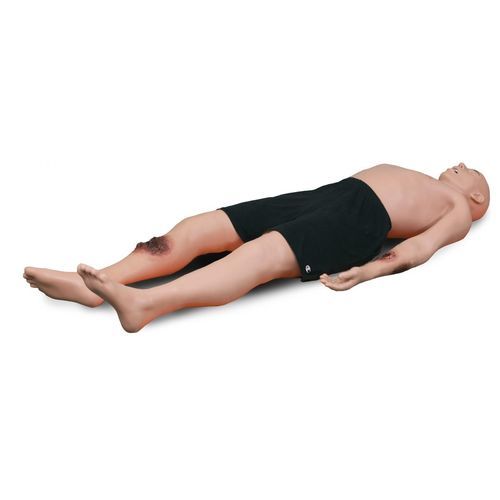
#Industry News
Welcome to TCS Pro – The Future of High Fidelity Trauma Simulation
The Future of High Fidelity Trauma Simulation
The United States Department of Defense (DOD) has an enormous training burden to satisfy. By sheer numbers alone, it employs and provides training to more people than any other system on the planet.
The number of women serving our Armed Forces has risen dramatically since 2015. Women among the enlisted ranks have increased seven-fold, from 2% to 14%. The great majority of these service members, male and female, are deployed in forward and austere locations around the globe.
The DOD knew that combat medicine training had to be accurate, repeatable, and realistic. There is no time for hesitation when faced with trauma situations either on the battlefield or in the scope of their duties assisting with civilian emergencies.
While the percentage of casualties for females was low (around 17%), those casualties suffered from a lower survivability rate than their male counterparts. Their analysis of this finding uncovered a need for better simulation training in trauma interventions, particularly with injured females.
Now, of course, they used simulators to teach trauma care. But they only had male simulators. Even with female overlays, the simulators they were using were less than adequate.
Additionally, combat medicine educators found that long before servicemembers reach a battlefield situation, they are trained on the values and mission they are to uphold. Honor is ingrained. Cultural expectations that women are to be respected were found to be an interesting, complicating factor.
When it came to a casualty situation, injuries in females would be missed because attending servicemembers were hesitant to completely remove clothing in order to preserve the patient’s dignity. It was a driving desire in combat medicine to untrain this behavior with an anatomically correct female trauma simulator.
Male TCS Pro simulator with combat wounds
In 2018, Operative Experience, Inc. (OEI) secured a Small Business Innovation Research (SBIR) contract with the DOD for the development of a high-fidelity, realistic female simulator, providing much-needed diversity in combat medicine training.
But this wasn’t just simply the development of a female simulator.
As part of this effort, OEI completely rethought what its entire line of simulators could be capable of. With the introduction of the Trauma Care Simulator Pro (TCS Pro), OEI provided users with a single simulator design that supports multiple trauma modules and capabilities. In this way, a single simulator can morph from a representation of a healthy individual to a polytrauma patient within a matter of minutes.
The TCS Pro simulator with wound options
“… As an airman, sailor or soldier, in order to care for patients from the point of injury to definitive care, you have a list of patient care tasks that you have to accomplish which today requires at least 3 or 4 mannequins or more. With TCS Pro, they buy one mannequin and add limbs and wound modules to achieve their training objectives. The cost savings are tremendous compared to the older way of using dedicated simulators for dedicated injuries.”
– Paul Bernal, OEI’s VP Global Sales and Business Development.
Carlos Moreno is OEI’s Chief Technology Officer and the chief architect of the new Pro platform. Carlos and the OEI team wanted to bring a lot of seamless and widely available technologies we enjoy today in our daily life to simulation technology.
Take for example the smartphone. Over and above the lowly phone call, smartphones today are actually a device with an infinite number of capabilities that are driven based on the applications installed on the phone.
The OEI approach was to establish an adaptable, flexible, and smart foundation capable of growing further based on installed modules and applications. The underpinnings of the platform don’t have to be redone every time a change is needed or made. A simple smart module can be written that can ride on the platform.
Carlos wants clients to know that this innovation truly enriches the way to teach. OEI has succeeded in bringing the concept of smart devices into the medical simulation platform. Every time a module is swapped out—for example, if you want to replace a healthy limb with one that has an open fracture or amputation—the smart simulator automatically reconfigures in real-time, and new capabilities become available to the instructor and trainee. Trainees must react in real-time to changing conditions on simulators that were only dreamed about a few short years ago. The TCS Pro also provides fully-integrated patient monitoring and allows users to seamlessly emulate real-world patient monitors such as Zoll, LifePack, Philips, and many more.
Automated clinical scenarios are included so you can be sure the simulation is accurate and meets the latest combat medicine protocols. Instructors are also able to override scenarios into “manual mode” so students can experience not just the routine, but out-of-the-ordinary presentations as well.
OEI also spent quite a bit of time analyzing what customers need in real-time after launching the new simulators. TCS Pro is unique in that it provides remote troubleshooting, remote maintenance, remote services, and remote upgrades. This gives clients a product that gives the user a tremendous amount of information and support to help maintain a long service life and a better user experience for customers.
Chairman and CEO, Lou Oberndorf concludes, “This brand new portfolio of simulators is really in line with the whole OEI philosophy – to innovate, to challenge ourselves to be as creative as we can be while trying to understand what the customer needs. We are not afraid to reach and to stretch to provide the kind of foundational capabilities that serve as a platform for us to go in almost any direction to grow in terms of the customer’s needs and abilities.“






